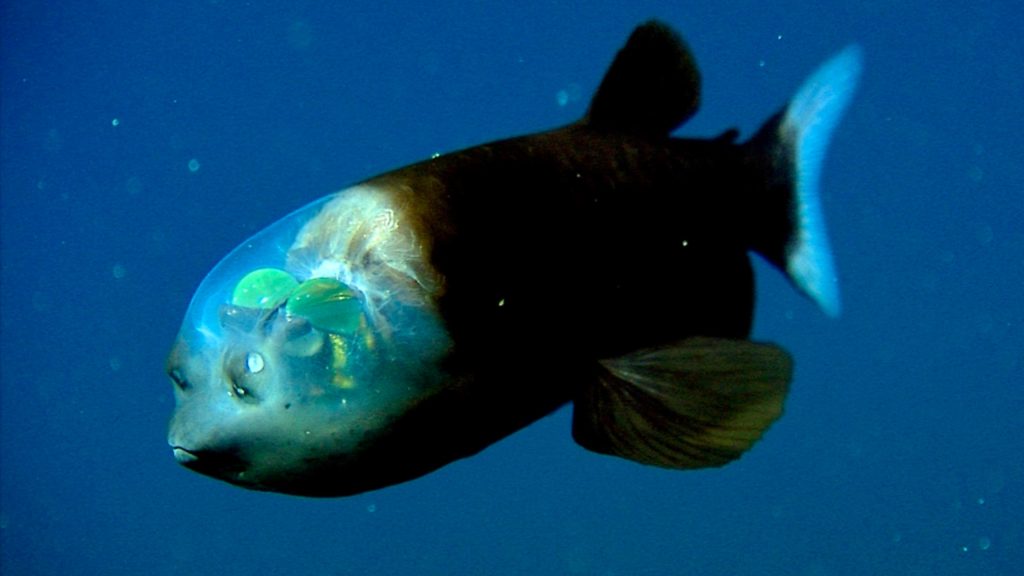With an astounding 8 million species inhabiting our planet, it’s no surprise that there are countless creatures that remain hidden from our awareness. Attempting to view pictures of all these fascinating animals would be an eight-year endeavor, dedicating 30 seconds to each image, without a pause for eating or sleeping. The continuous discovery of new and rare animal species by scientists further adds to the complexity of this vast ecosystem. To spare you the exhaustive effort, we’ve curated a list featuring the most intriguing and peculiar animals, ensuring you won’t need a decade to explore them yourself.
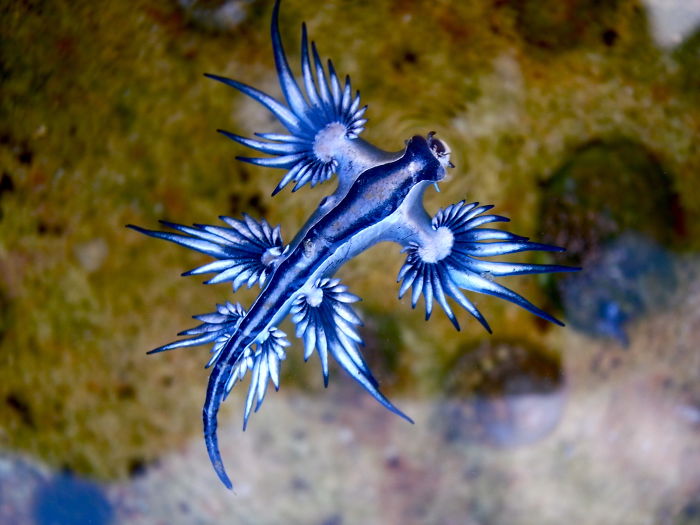
#1 Glaucus Atlanticus
Referred to as the blue dragon, this organism is a type of blue sea slug. It inhabits the warm waters of oceans and floats on the surface due to a gas-filled sack in its stomach.
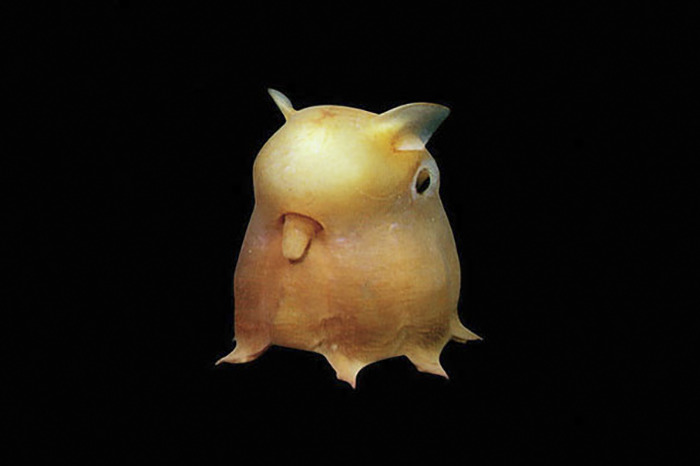
#2 Dumbo Octopus
The umbrella octopus, known as the Dumbo octopus, is distributed globally. It derives its name from Disney’s “Dumbo” due to the resemblance of its ears to the title character in the movies.
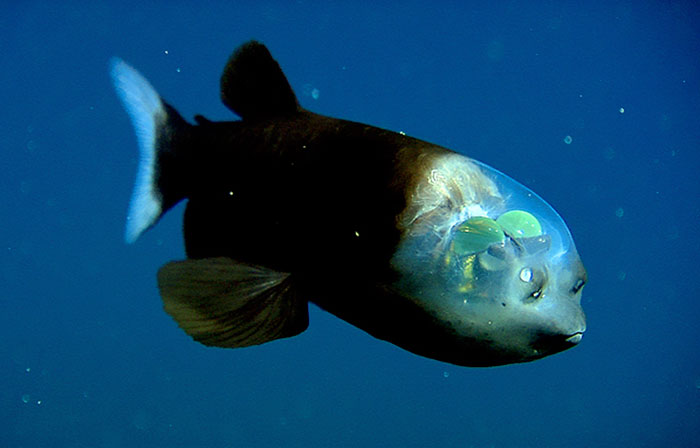
#3 Macropinna Microstoma
Macropinna microstoma is a fish species residing at depths ranging from approximately 600 meters (2,000 ft) to 800 meters (2,600 ft). It remains almost stationary in the water and is distinctive for having a transparent, fluid-filled dome on its head, allowing the lenses of its eyes to be visible.
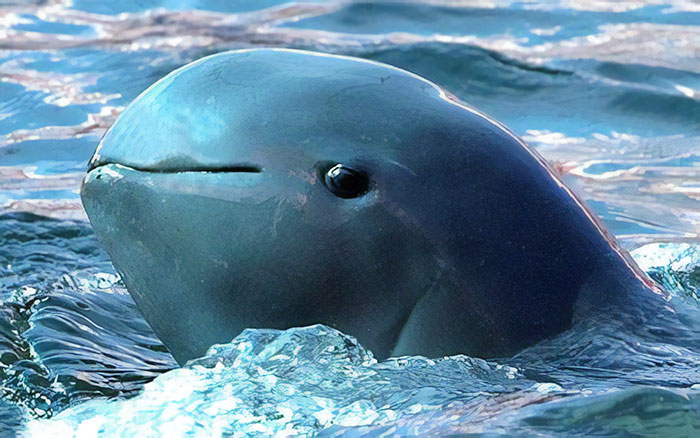
#4 Irrawaddy Dolphin
The Irrawaddy Dolphin is an oceanic dolphin discovered in the Bay of Bengal and Southeast Asia. Its prominent characteristic is a rounded head without a distinct beak.
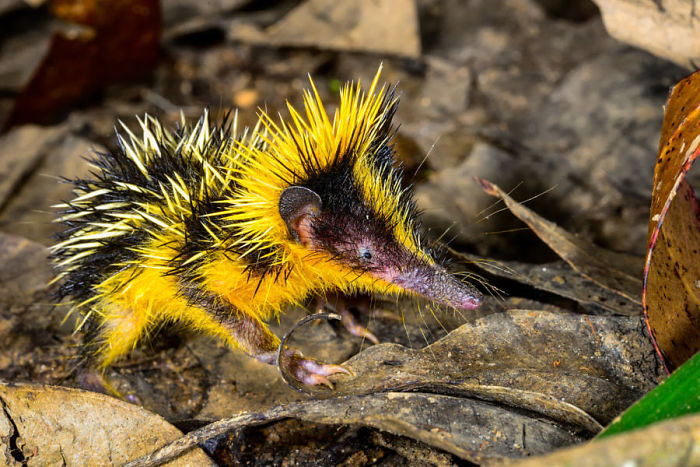
#5 Lowland Streaked Tenrec
This small tenrec, located in Madagascar, Africa, is the sole mammal recognized for utilizing stridulation to produce sound, a behavior typically associated with snakes and insects.
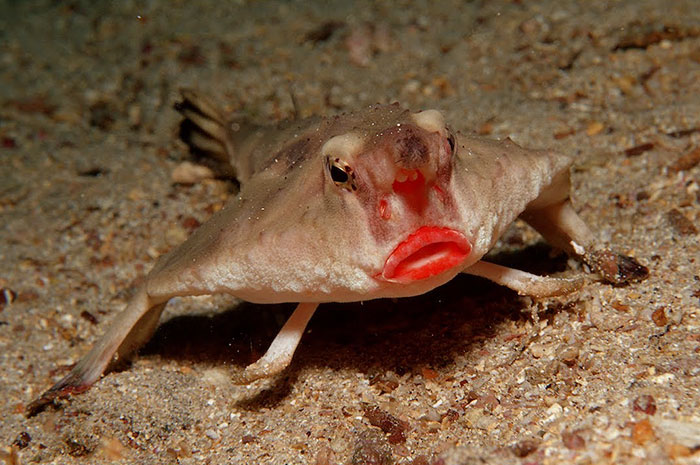
#6 Red-Lipped Batfish
Discovered in the Galapagos Islands, this fish is not a proficient swimmer and employs its pectoral fins to ambulate along the ocean floor.
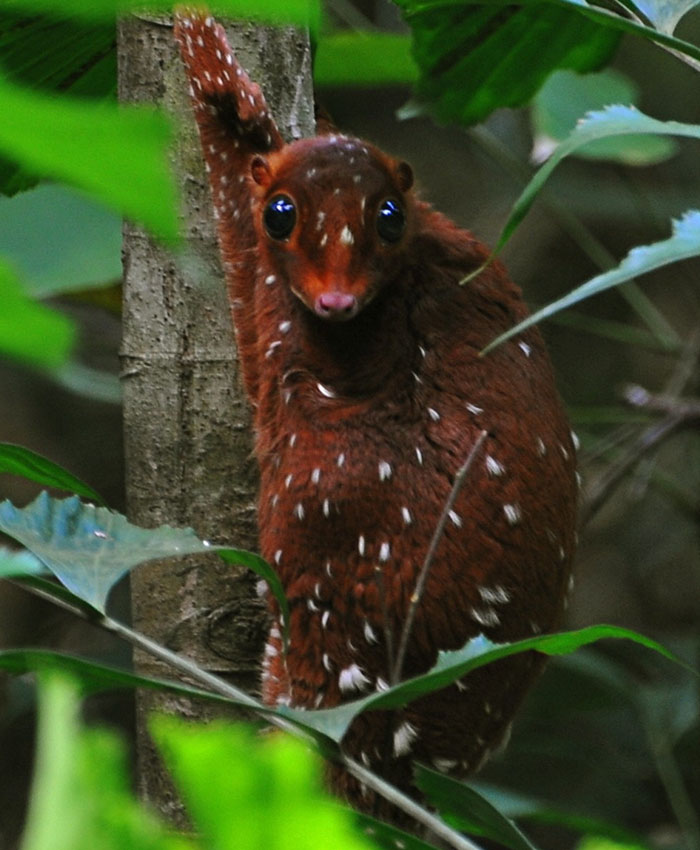
#7 Sunda Colugo
The Sunda Colugo, also known as the Sunda flying lemur, is a colugo species indigenous to Indonesia, Thailand, Malaysia, and Singapore. Contrary to its name, it is not a lemur and doesn’t fly but rather glides. Active during the night, the Sunda Colugo sustains itself by consuming soft plant parts such as young leaves, shoots, flowers, and fruits.
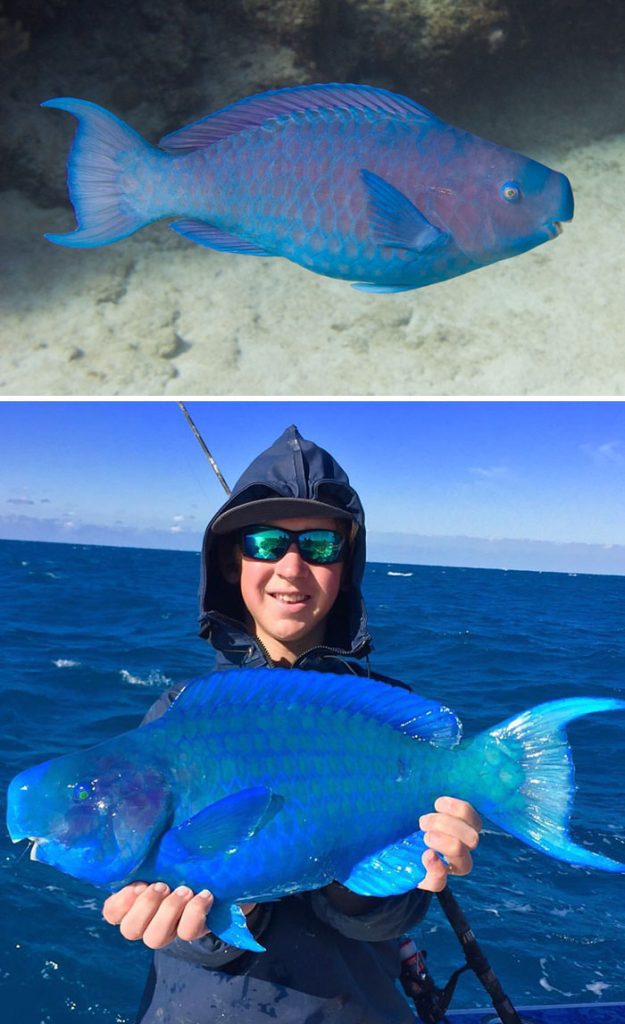
#8 Blue Parrotfish
The vivid blue fish is located in shallow waters within the tropical and subtropical regions of the western Atlantic Ocean and the Caribbean Sea. Approximately 80 percent of their time is dedicated to foraging for food, primarily small organisms in the sand and algae, which they scrape off rocks.
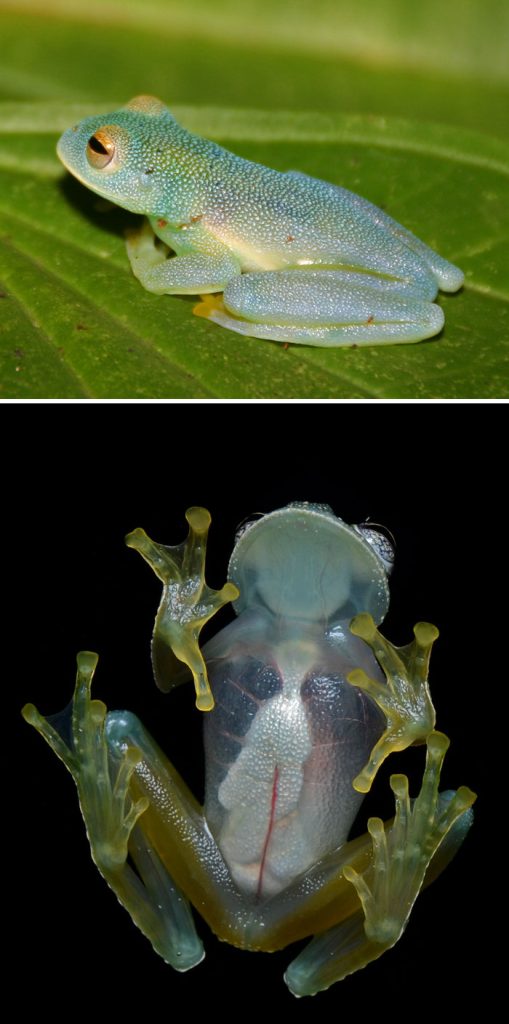
#9 Glass Frog
Native to South America, the glass frog is an amphibian family, and some individuals showcase a remarkable trait – transparent abdomens. They are commonly referred to as glass frogs due to the visibility of internal viscera through their skin.
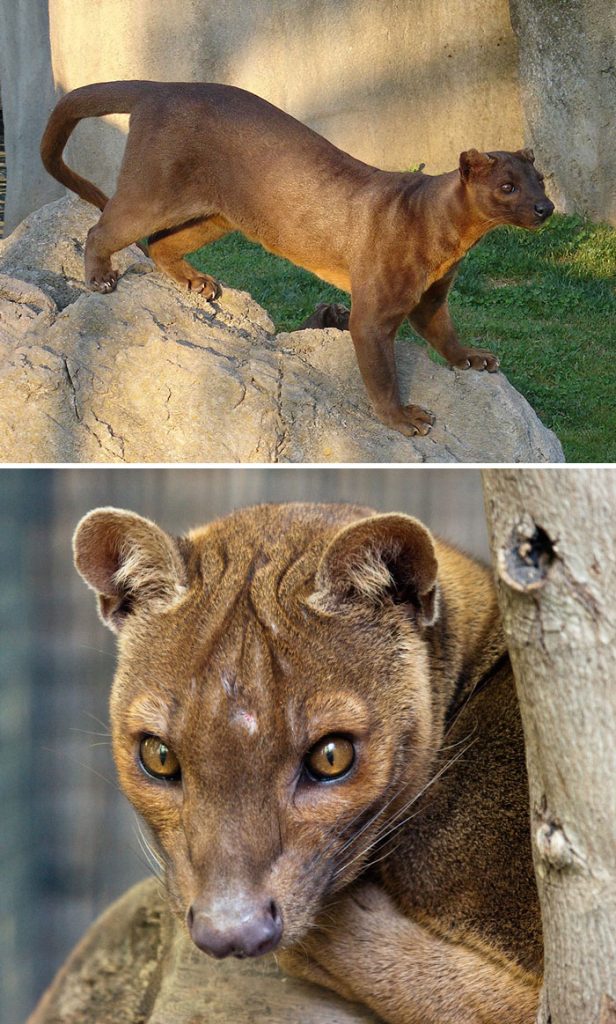
#10 Fossa
Fossa is a cat-like mammal that lives in Madagascar. Its classification has been controversial because physically it resembles a cat, while other traits suggest relation to viverrids. Genetic research has shown that they are actually their own separate species.
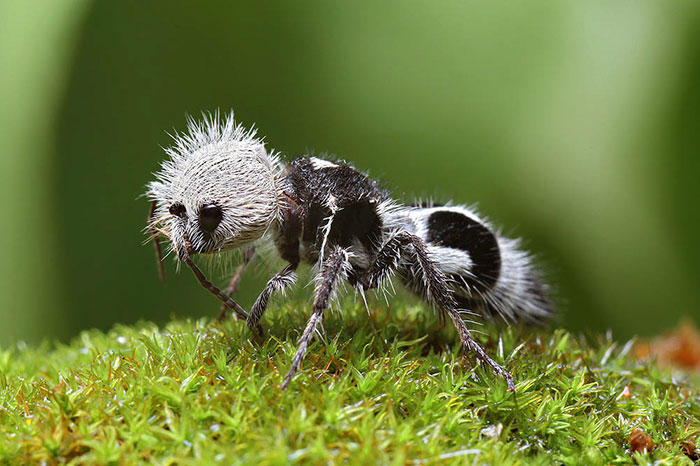
#11 Panda Ant
Although resembling an ant and commonly referred to as such, this insect is, in reality, a wingless wasp. Recognized as the cow-killer, females feature denser fur but are devoid of wings. The furry panda ant has a lifespan of approximately 2 years.
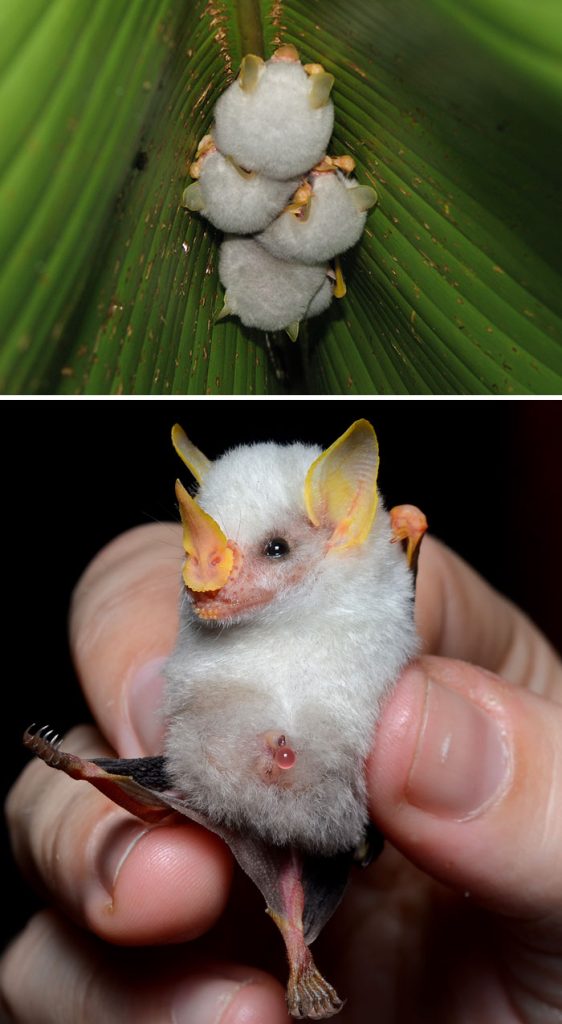
#12 Honduran White Bat
The Honduran white bat is characterized by its unique white fur, with the tips of individual hairs displaying a gray hue, along with a leaf-shaped nose. These bats reside in leaf “tents” which they create by cutting the side veins extending from the midrib of large leaves.
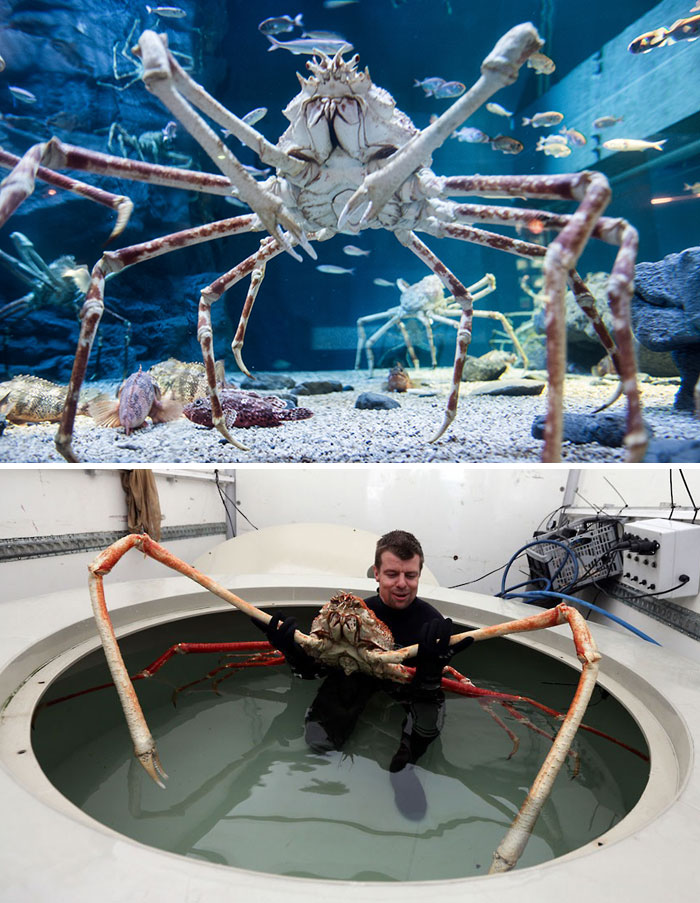
#13 Japanese Spider Crab
The Japanese spider crab inhabits the waters near Japan and boasts the most extensive leg span among arthropods, reaching up to 5.5 meters (18 ft). Despite its intimidating appearance, reports indicate that the crab possesses a gentle disposition.
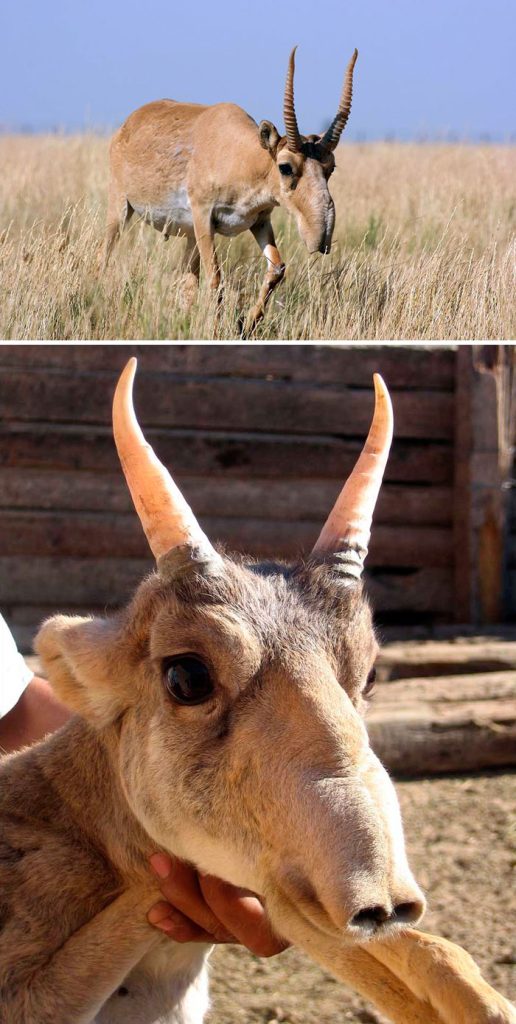
#14 Saiga Antelope
The saiga, found across the Eurasian steppe, is recognized for its highly unusual, oversized, and flexible nose structure known as the proboscis. This antelope is classified as critically endangered.
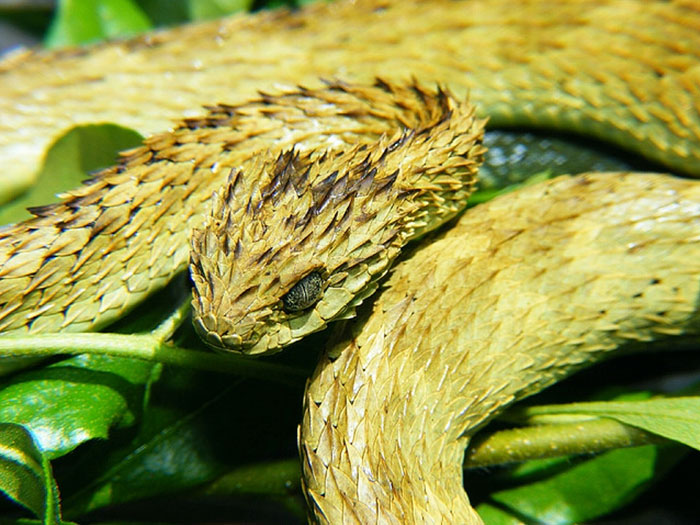
#15 Spiny Bush Viper
Atheris hispida is a venomous viper native to Central Africa. Due to its prominently keeled dorsal scales, it is commonly referred to as the “rough-scaled bush viper” and “spiny bush viper.”
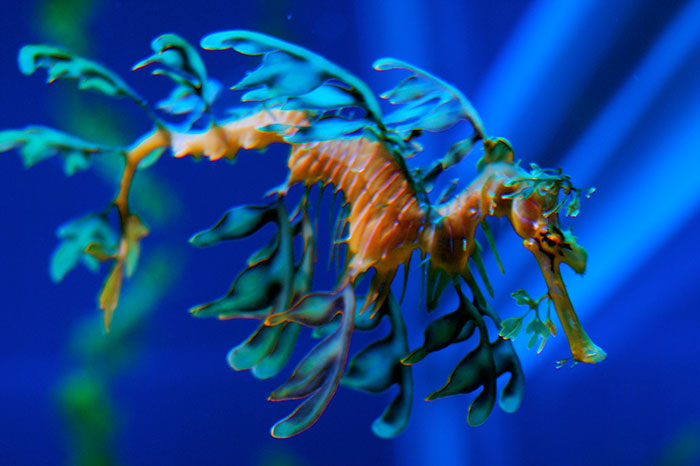
#16 Leafy Seadragon
Situated along the southern and western coasts of Australia, the leafy seadragon is a marine fish characterized by long leaf-like protrusions covering its entire body, providing effective camouflage.
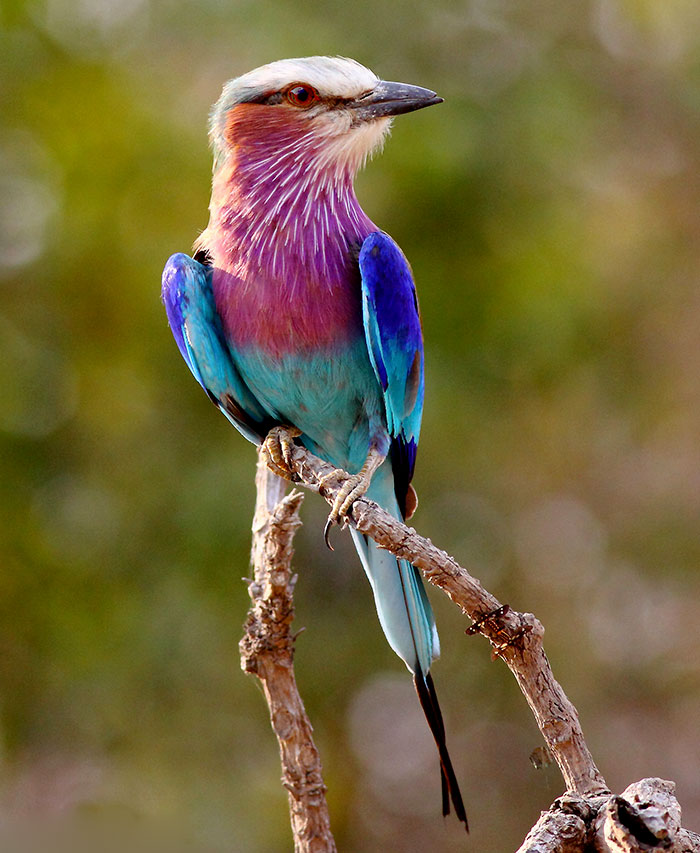
#17 Lilac-Breasted Roller
The lilac-breasted roller, widely spread across sub-Saharan Africa and the southern Arabian Peninsula, is a vibrant bird that prefers perching in tall trees and other elevated positions to spot prey at ground level. Its distinctive plumage includes deep lilac breast feathers.
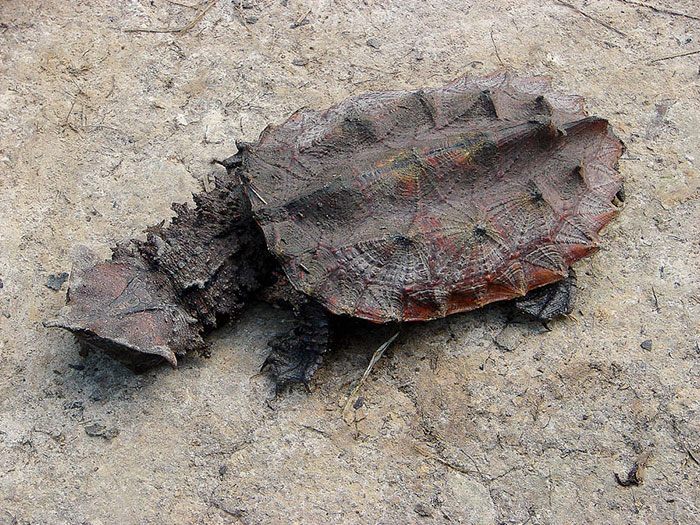
#18 Mata Mata
Native to South America, the mata mata is a freshwater turtle recognized for its large, triangular, flattened head adorned with numerous tubercles and flaps of skin. Additionally, it features a “horn” on its long and tubular snout.
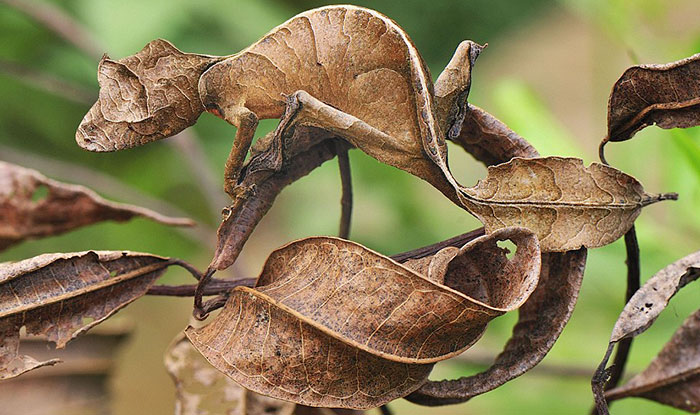
#19 Satanic Leaf-Tailed Gecko
The Satanic leaf-tailed gecko is a gecko species native to the island of Madagascar. Its flattened tail resembles a leaf, aiding the animal in blending seamlessly into its environment.
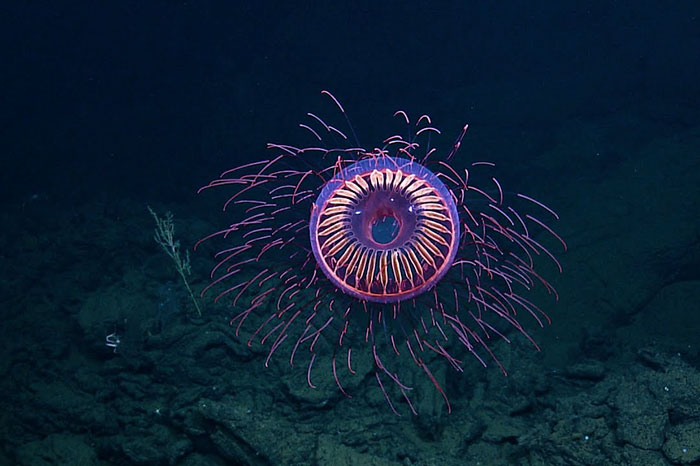
#20 Halitrephes Jelly
Halitrephes is a deep-sea hydrozoan species residing at depths ranging from 4,000 to 5,000 feet.
